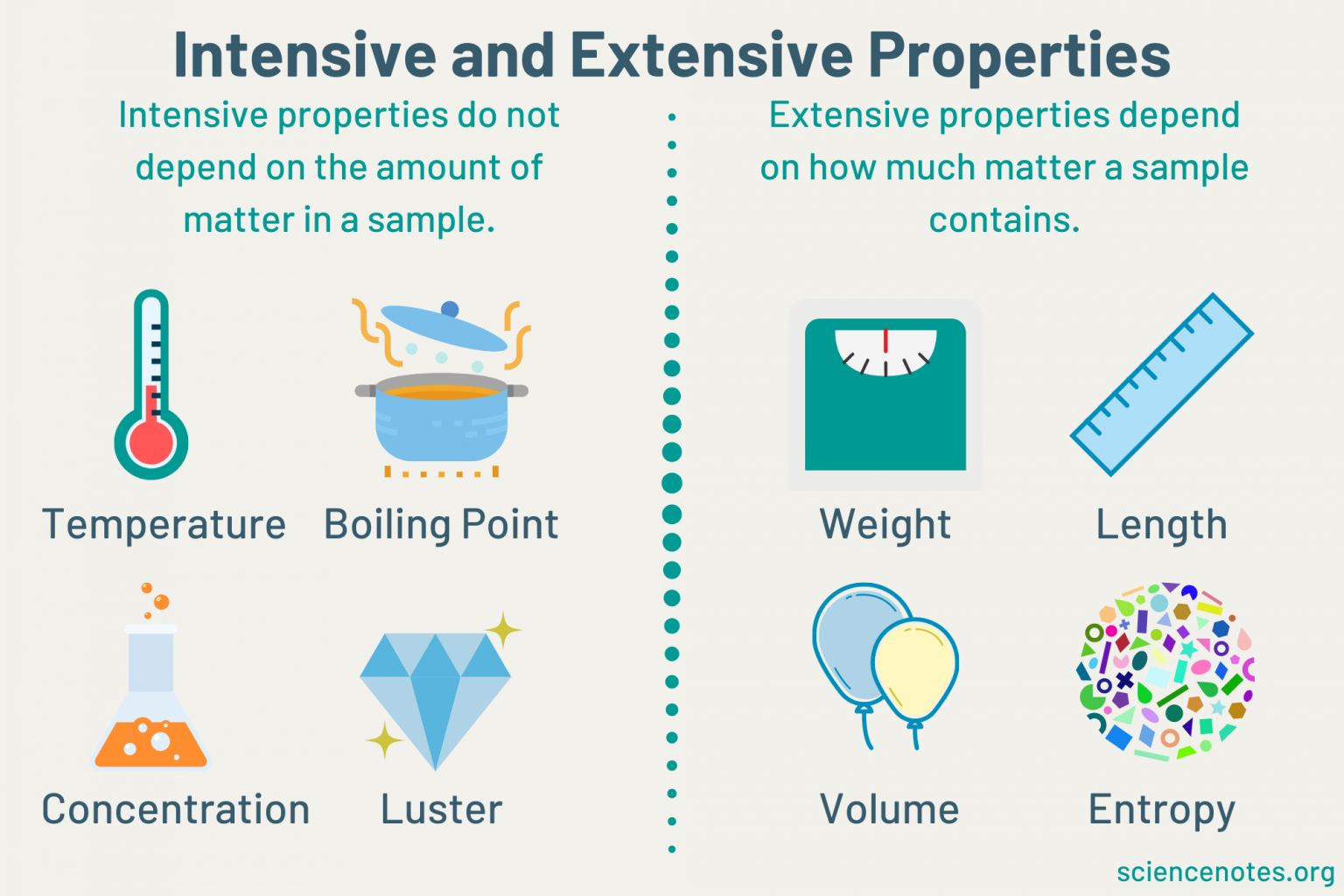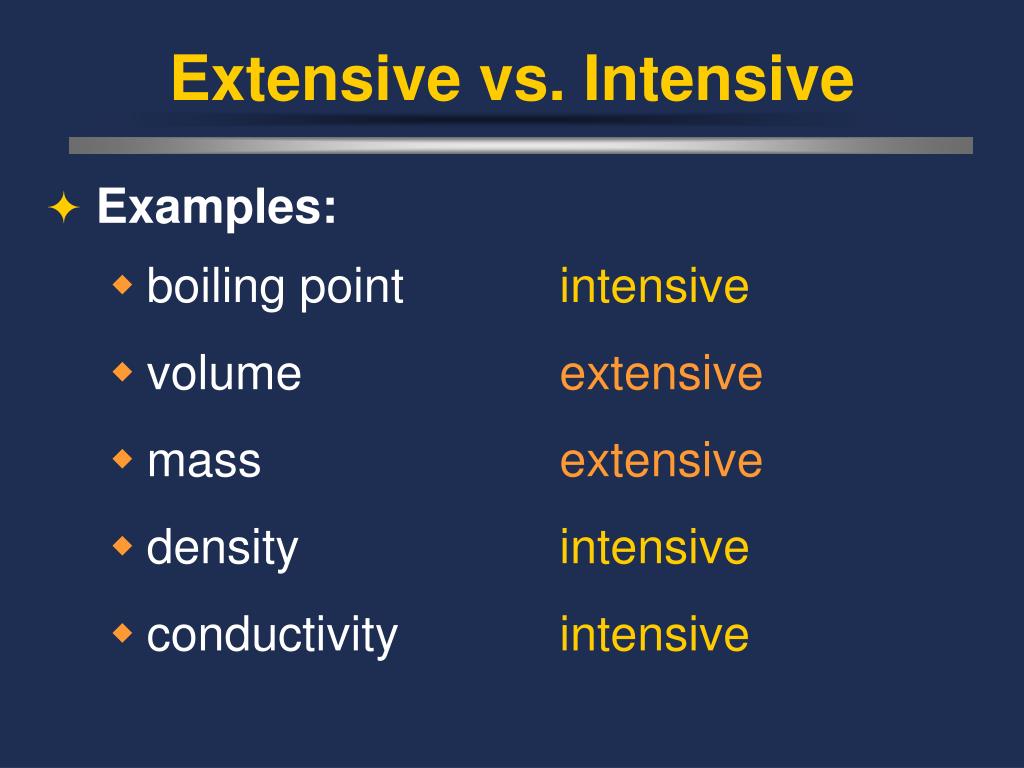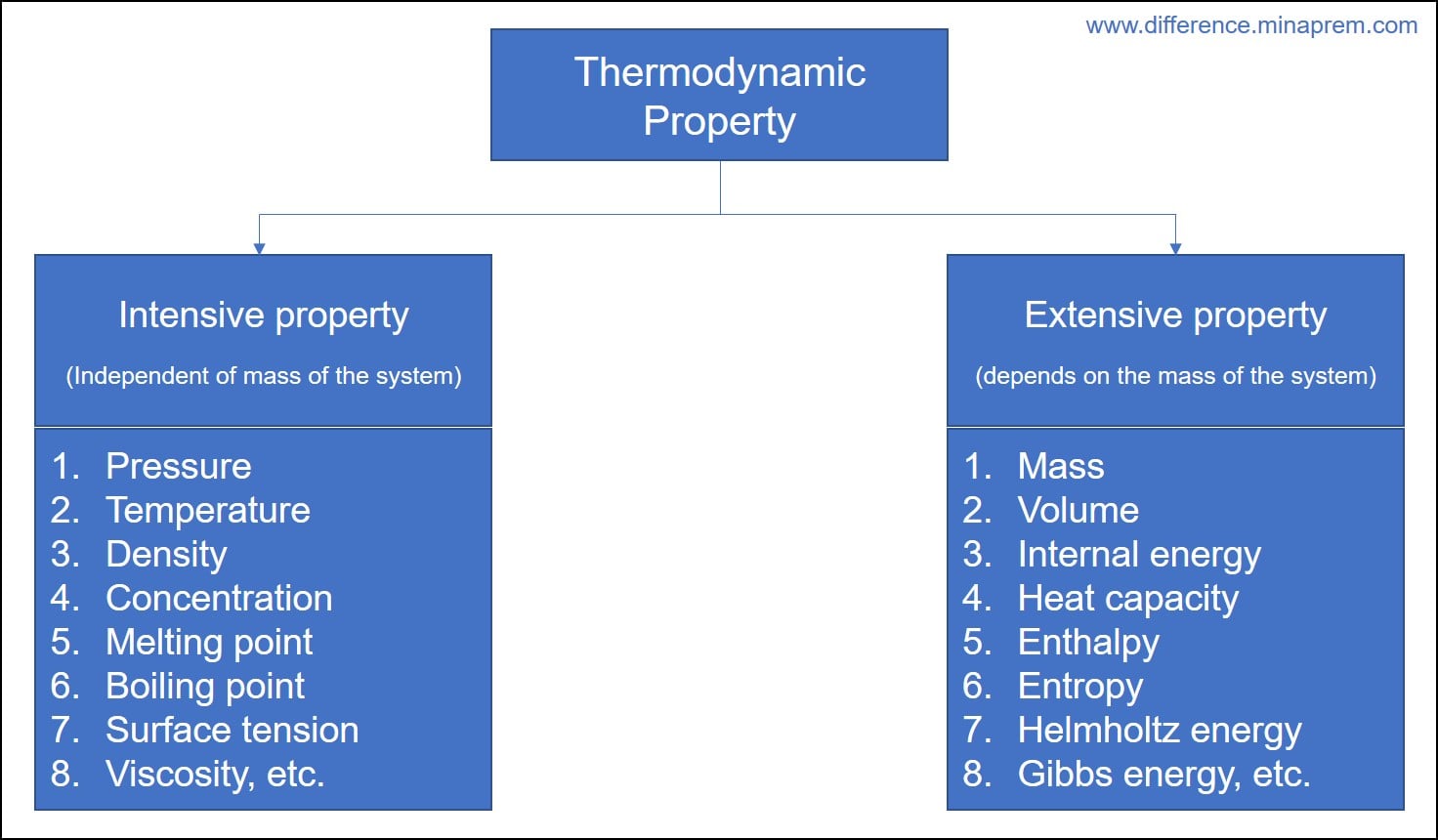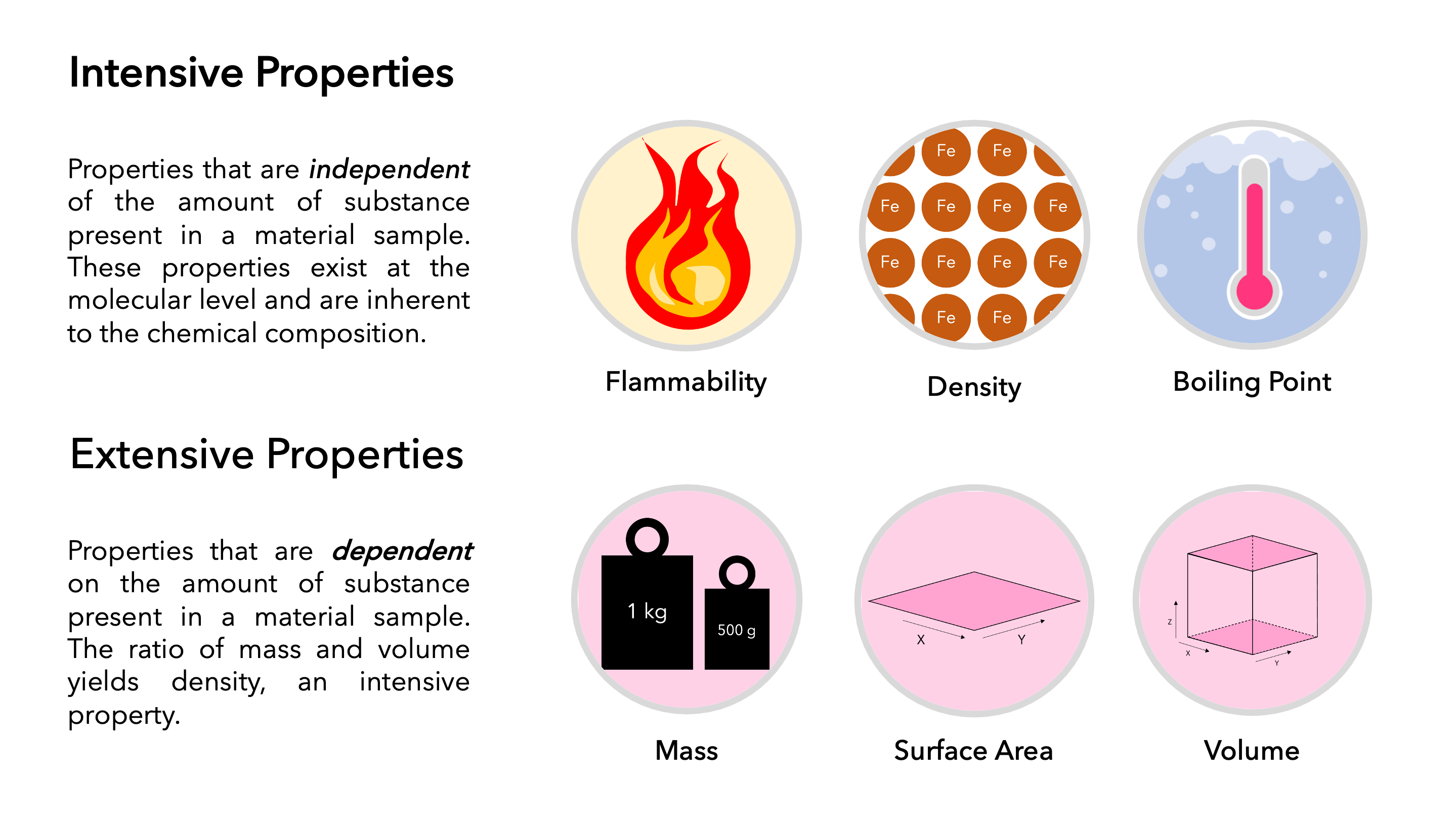Extensive Vs Intensive Properties
Extensive Vs Intensive Properties - For example, the ratio of an object's mass and volume, which are two extensive properties, is. Intensive properties, in contrast, do not depend on the amount of the substance; Intensive properties do not depend on the quantity of matter. The ratio of two extensive properties of the same object or system is an intensive property. Mass and volume are examples of extensive properties. Extensive properties vary with the amount of the substance and include mass, weight, and volume. An extensive property is a property that depends on the amount of matter in a sample. The two types of physical properties of matter are intensive properties and extensive properties. An intensive property is a property of matter that. Extensive and intensive properties are the two types of physical properties of matter.
Extensive and intensive properties are the two types of physical properties of matter. An intensive property is a property of matter that. For example, the ratio of an object's mass and volume, which are two extensive properties, is. Intensive properties do not depend on the quantity of matter. Mass and volume are examples of extensive properties. An extensive property is a property that depends on the amount of matter in a sample. Extensive properties vary with the amount of the substance and include mass, weight, and volume. Intensive properties do not depend on the amount of matter in a substance. The ratio of two extensive properties of the same object or system is an intensive property. The two types of physical properties of matter are intensive properties and extensive properties.
Intensive properties, in contrast, do not depend on the amount of the substance; Extensive properties vary with the amount of the substance and include mass, weight, and volume. An intensive property is a property of matter that. For example, the ratio of an object's mass and volume, which are two extensive properties, is. Intensive properties do not depend on the quantity of matter. Extensive and intensive properties are the two types of physical properties of matter. The ratio of two extensive properties of the same object or system is an intensive property. The two types of physical properties of matter are intensive properties and extensive properties. An extensive property is a property that depends on the amount of matter in a sample. Intensive properties do not depend on the amount of matter in a substance.
Intensive vs. Extensive Property What's the Difference? • 7ESL
The ratio of two extensive properties of the same object or system is an intensive property. Intensive properties do not depend on the amount of matter in a substance. An extensive property is a property that depends on the amount of matter in a sample. Extensive properties vary with the amount of the substance and include mass, weight, and volume..
Intensive and extensive properties YouTube
For example, the ratio of an object's mass and volume, which are two extensive properties, is. Extensive properties vary with the amount of the substance and include mass, weight, and volume. Extensive and intensive properties are the two types of physical properties of matter. An extensive property is a property that depends on the amount of matter in a sample..
Extensive and Intensive Properties Study Guide Inspirit
An intensive property is a property of matter that. For example, the ratio of an object's mass and volume, which are two extensive properties, is. An extensive property is a property that depends on the amount of matter in a sample. Extensive and intensive properties are the two types of physical properties of matter. Extensive properties vary with the amount.
Difference Between Intensive and Extensive Properties Definition
Mass and volume are examples of extensive properties. An extensive property is a property that depends on the amount of matter in a sample. Intensive properties do not depend on the quantity of matter. The ratio of two extensive properties of the same object or system is an intensive property. Extensive and intensive properties are the two types of physical.
The Difference Between Intensive and Extensive Properties
Intensive properties do not depend on the amount of matter in a substance. An extensive property is a property that depends on the amount of matter in a sample. For example, the ratio of an object's mass and volume, which are two extensive properties, is. The ratio of two extensive properties of the same object or system is an intensive.
Extensive Properties Vs Intensive Properties
The ratio of two extensive properties of the same object or system is an intensive property. For example, the ratio of an object's mass and volume, which are two extensive properties, is. Extensive properties vary with the amount of the substance and include mass, weight, and volume. Intensive properties, in contrast, do not depend on the amount of the substance;.
Intensive vs. Extensive Property What's the Difference? • 7ESL
An intensive property is a property of matter that. Extensive and intensive properties are the two types of physical properties of matter. Intensive properties, in contrast, do not depend on the amount of the substance; An extensive property is a property that depends on the amount of matter in a sample. The two types of physical properties of matter are.
PPT Properties & Changes in Matter Extensive vs. Intensive Physical
For example, the ratio of an object's mass and volume, which are two extensive properties, is. Mass and volume are examples of extensive properties. The two types of physical properties of matter are intensive properties and extensive properties. Extensive properties vary with the amount of the substance and include mass, weight, and volume. Extensive and intensive properties are the two.
Difference Between Intensive Property and Extensive Property
For example, the ratio of an object's mass and volume, which are two extensive properties, is. An intensive property is a property of matter that. The two types of physical properties of matter are intensive properties and extensive properties. Intensive properties do not depend on the amount of matter in a substance. Mass and volume are examples of extensive properties.
Extensive vs. Intensive Properties — Overview & Examples Expii
Intensive properties do not depend on the quantity of matter. Intensive properties do not depend on the amount of matter in a substance. Intensive properties, in contrast, do not depend on the amount of the substance; For example, the ratio of an object's mass and volume, which are two extensive properties, is. The ratio of two extensive properties of the.
The Ratio Of Two Extensive Properties Of The Same Object Or System Is An Intensive Property.
Intensive properties do not depend on the quantity of matter. Mass and volume are examples of extensive properties. The two types of physical properties of matter are intensive properties and extensive properties. Extensive and intensive properties are the two types of physical properties of matter.
An Extensive Property Is A Property That Depends On The Amount Of Matter In A Sample.
Extensive properties vary with the amount of the substance and include mass, weight, and volume. For example, the ratio of an object's mass and volume, which are two extensive properties, is. Intensive properties, in contrast, do not depend on the amount of the substance; An intensive property is a property of matter that.




/intensive-vs-extensive-properties-604133-v3-5b55fb394cedfd0037117796.png)




